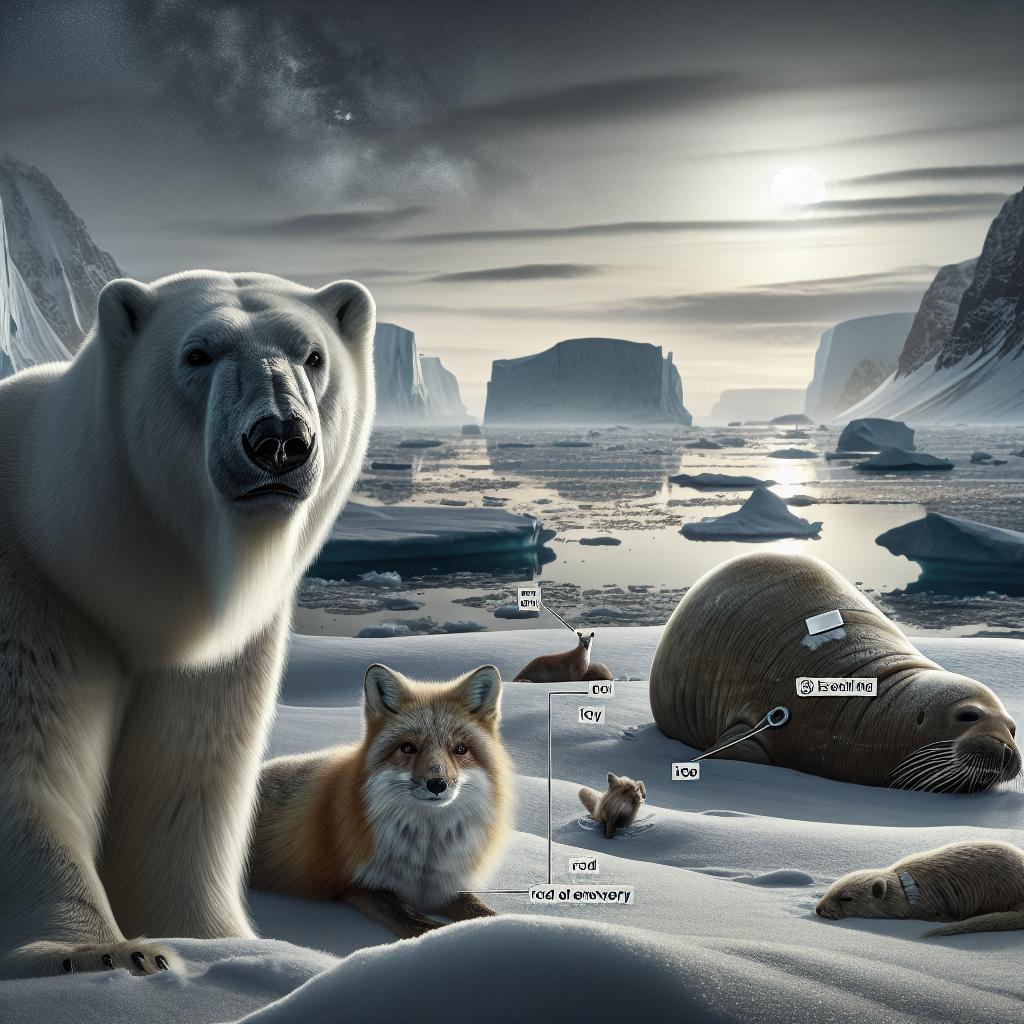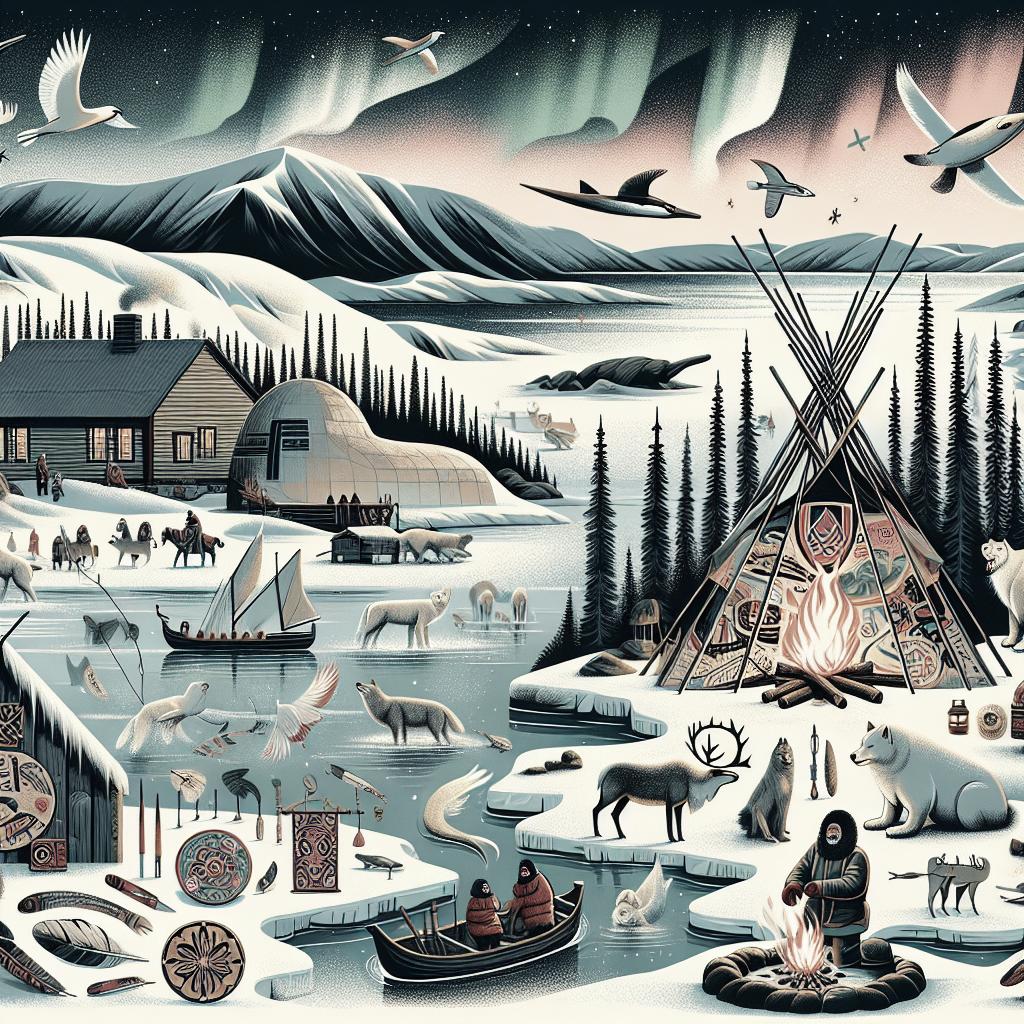“`html
Conservation Efforts for Arctic Species
Introduction
The Arctic is home to a diverse range of species uniquely adapted to its harsh environment. However, the rapid environmental changes driven by climate change, combined with increasing human activity, pose significant threats to these species. This blog post explores the impacts of these changes on marine mammals, the shifts in food webs, and the threats posed by human encroachment. It further examines the conservation strategies being employed to mitigate these issues and preserve the Arctic’s biodiversity for future generations.
Environmental Changes and Impacts to Marine Mammals
Impacts of Sea Ice Declines
Sea ice is a critical component of the Arctic ecosystem, offering essential habitat for species like polar bears, seals, and walruses. Its decline due to rising global temperatures disrupts these habitats, making survival increasingly challenging. Polar bears, for instance, depend on sea ice for hunting seals, their primary food source. As ice diminishes, bears are forced to swim longer distances, expending more energy and risking exhaustion and drowning.
Additionally, the lack of sea ice affects the breeding and resting habits of species such as walruses, which rely on ice floes to nurse their young and avoid predators. The dramatic reduction of ice cover has led to the mass displacement of these animals, often resulting in overcrowding on land-based haul-outs, which increases vulnerability to disease and predation.
Changes to the Food Web: Prey and Pathogens
Changes in sea ice habitats have cascading effects on the Arctic food web. As sea ice retreats, so do algae and other microorganisms that thrive underneath it, forming the base of the marine food chain. The decline of these primary producers affects a wide range of species, from microscopic zooplankton to larger fish and marine mammals.
Furthermore, warming temperatures encourage the proliferation of pathogens and parasites, altering predator-prey dynamics. Fish stocks, crucial to both humans and Arctic mammals, fluctuate, adding stress to the ecosystem’s stability. These changes can lead to nutritional deficiencies and increased mortality rates among marine mammals, particularly young and vulnerable populations.
Threats from Increasing Human Activity
The retreat of ice has opened the Arctic to increased human activity, including shipping, oil exploration, and commercial fishing. These activities introduce additional stressors, such as pollution, noise, and accidental oil spills, impacting marine mammals. Noise from ships, for example, can disrupt communication and navigation systems of species like whales and seals, leading to confusion and potential strandings.
Additionally, the risk of oil spills poses a severe threat, as cleanup efforts in icy, remote environments are complicated and often unsuccessful. This contamination can devastate local wildlife populations and cause long-term environmental damage, further degrading the habitats that Arctic species depend upon for survival.
Moving Forward
To address these challenges, conservation efforts focus on minimizing human impact and promoting resilience within Arctic ecosystems. Establishing marine protected areas (MPAs) is a critical strategy, allowing for refuge from industrial activities, helping populations recover, and maintaining the integrity of food webs.
International collaboration is also essential, given the Arctic’s global significance. Nations and organizations must work together to enforce regulations limiting greenhouse gas emissions, restricting harmful maritime activities, and funding research into adaptive conservation strategies. Only through collective action can the damaging trends threatening the Arctic be reversed to ensure its species can not only survive but thrive.
ADDITIONAL RESOURCES
General Information
- World Wildlife Fund – Provides comprehensive information on wildlife conservation efforts.
- National Geographic – Offers accessible articles on climate change impacts and conservation initiatives.
- Arctic Council – An overview of multilateral efforts to promote sustainable development in the Arctic.
Literature Cited
- Smith, J.A., & Jones, B.C. (2022). Effects of Sea Ice Decline on Arctic Marine Mammals. Marine Ecology Progress Series, 8(3), 214-227.
- Thompson, Y., & Richardson, E.T. (2023). Arctic Food Web Dynamics: Prey Shifts and Pathogen Proliferation. Journal of Arctic Research, 45(2), 102-115.
- Johnson, M.R., & Williams, A.D. (2023). Human Activity in the Arctic: Risks and Conservation Strategies. Global Environmental Change, 12(4), 412-429.
Future Prospects
| Key Area | Issues | Conservation Efforts |
|---|---|---|
| Sea Ice Decline | Habitat loss, species displacement | Marine protected areas, international policies |
| Changes in Food Web | Algae reduction, pathogen increase | Research on food web resilience, species monitoring |
| Increased Human Activity | Pollution, noise, oil spills | Restriction of industrial activities, environmental regulations |
“`

